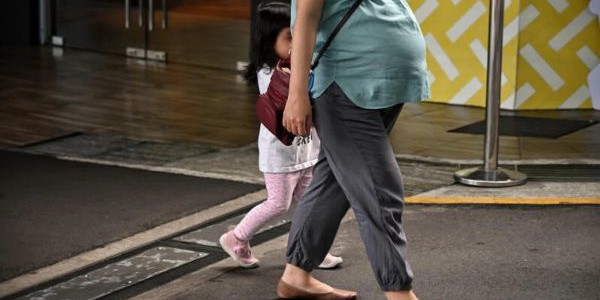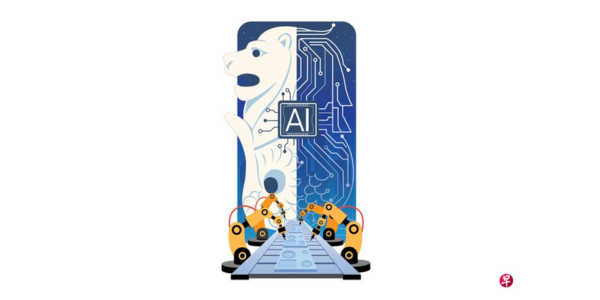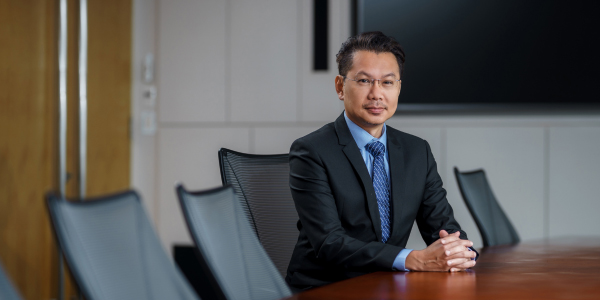A*STAR NEWS
How Making Robots Human-like Can Support An Ageing Workforce
By Dr Yau Wei Yun, Head of the Robotics & Autonomous Systems department at A*STAR’s Institute for Infocomm Research (I2 R)

This image was generated with the assistance of AI.
In 2023, Singapore citizens aged 65 and above made up almost one-fifth of the population, up by more than 11 per cent from a decade ago. By 2030, almost 1 in 4 Singaporeans will be over 65. As Singapore’s population ages rapidly, we must innovate to create a more age- inclusive society and be future-ready. Robots can be a promising solution to reduce the physical strain on older workers while still enabling them to contribute valuable skills and experience. Imagine robots doing physical patrols while elderly security guards in centralised control centres get a comprehensive and real-time overview of entire sites to make key security decisions, or robots helping to inspect aircrafts and buildings, allowing their elderly counterparts to take on a supervisory role of recommending targeted maintenance or repairs.
To make it easier for mature Singaporean workers to fully embrace robots and reap the benefits of working alongside them, we must transform robots beyond mere mechanical tools to become more human-like in the way they move, sense and interact with the world.
We must design robots of the future in a way where they can intuitively communicate and collaborate with humans to achieve tasks, intelligently adapt to changing situations, and be multi-functional, so that they are more viable for real-world use.
Allowing humans and robots to communicate more intuitively and seamlessly
Although robots are increasingly ubiquitous across manufacturing and hospitality sectors, it can be daunting for the elderly to incorporate them into their working processes as they may struggle with complex interfaces and risk injury from the improper use of robots.
In order to break down the barriers between man and machine, robots should be able to learn through watching and mirroring people’s actions, and interact naturally. By developing and incorporating advanced voice, visual and gesture recognition systems into robots, this could be a reality especially with the recent development in AI technologies, which gives robots a human-like sense of perception and communication.
A*STAR is collaborating with several partners to develop a large language model customised to local languages and dialects. This could be installed in robots so that seniors can simply command and interact with the robots using familiar language.
Beyond verbal commands, it will also be useful if robots can learn to perform new tasks by observing how humans do them. This can potentially pave the way for seniors to teach robots through actions without needing to explicitly programme them. A*STAR is collaborating with institutes of higher learning on a research programme to realise this goal.
Making robots more versatile and adaptable
Robots are traditionally pre-programmed for singular, highly-specialised functions in pre- determined zones, and may occasionally freeze when they encounter unfamiliar obstructions or changes in their environment such as crowds or even festive decorations, leading to delays or failed tasks.
With the increasing demand for robots to achieve more complex and dynamic tasks in ever changing environments, robots will need to be more intelligent with greater situational awareness, so that they can effectively aid elderly workers instead of disrupting workflows.
A*STAR has developed a machine learning model which gives robots spatial awareness and enables them to predict people’s movements while recognising their environment. This allows robots to be trained to safely navigate around humans in crowded spaces.
Additionally, to allow robots to effectively communicate with each other and their surroundings for smooth and efficient operations, the National Robotics Programme (NRP), a national platform hosted by A*STAR, has worked with ecosystem partners to develop the Robotics Middleware Framework, to ensure interoperability among diverse robotic fleets, and with building infrastructure such as lifts and doors. NRP will receive a new tranche of about $60 million in funding to translate Singapore’s robotics capabilities in sectors such as manufacturing and logistics, facilities management and healthcare, to support business transformation.
Another way of making robots more versatile and adaptable to help seniors is to incorporate AI technologies, so that the robots’ sight, navigation and reasoning capabilities become more human-like, to allow them to learn from past data as well as navigate less structured environments. For example, the Multi-purpose All Terrain Autonomous Robot (MATAR) has in-built navigation, sound and visual processing AI technologies developed by A*STAR, to effectively navigate in, and monitor crowds, detect suspicious activities, and notify relevant officers. A*STAR is collaborating with government agencies and companies to enhance and expand the use of MATAR across different use cases that would enable workers to focus on higher-value tasks and help make these tasks suitable for workers of different ages and abilities.
Addressing cost issues to increase adoption of robots
As we continuously innovate to improve the capabilities of robots, it is important to reduce the cost and time currently needed to develop and deploy these smart robots. This is vital to make it more financially feasible to deploy robots on a larger scale, so that they can benefit more older workers.
According to the International Federation of Robotics (IFR), programming and integration represent 50 to 70 per cent of a robot’s cost. Through the use of AI technologies, we can reduce the time and resources needed for programming robots, paving way for user- friendly, intelligent robots that are able to perform more functions and work with people closely as a team.
By continually innovating to unlock the technological potential of robots, we can look forward to a future where robots are more seamlessly integrated into our society to address the needs of our ageing population and complement our elderly workforce.
Was This Article Helpful ?
A*STAR celebrates International Women's Day

From groundbreaking discoveries to cutting-edge research, our researchers are empowering the next generation of female science, technology, engineering and mathematics (STEM) leaders.
Get inspired by our #WomeninSTEM




